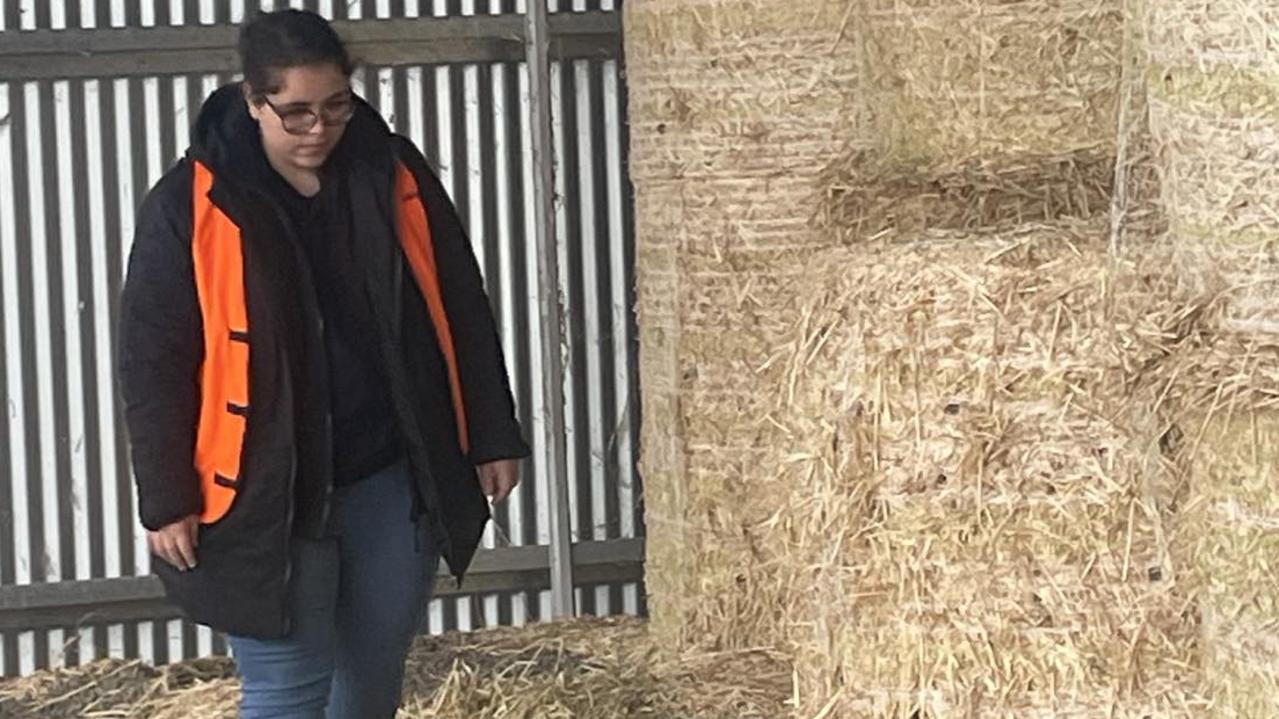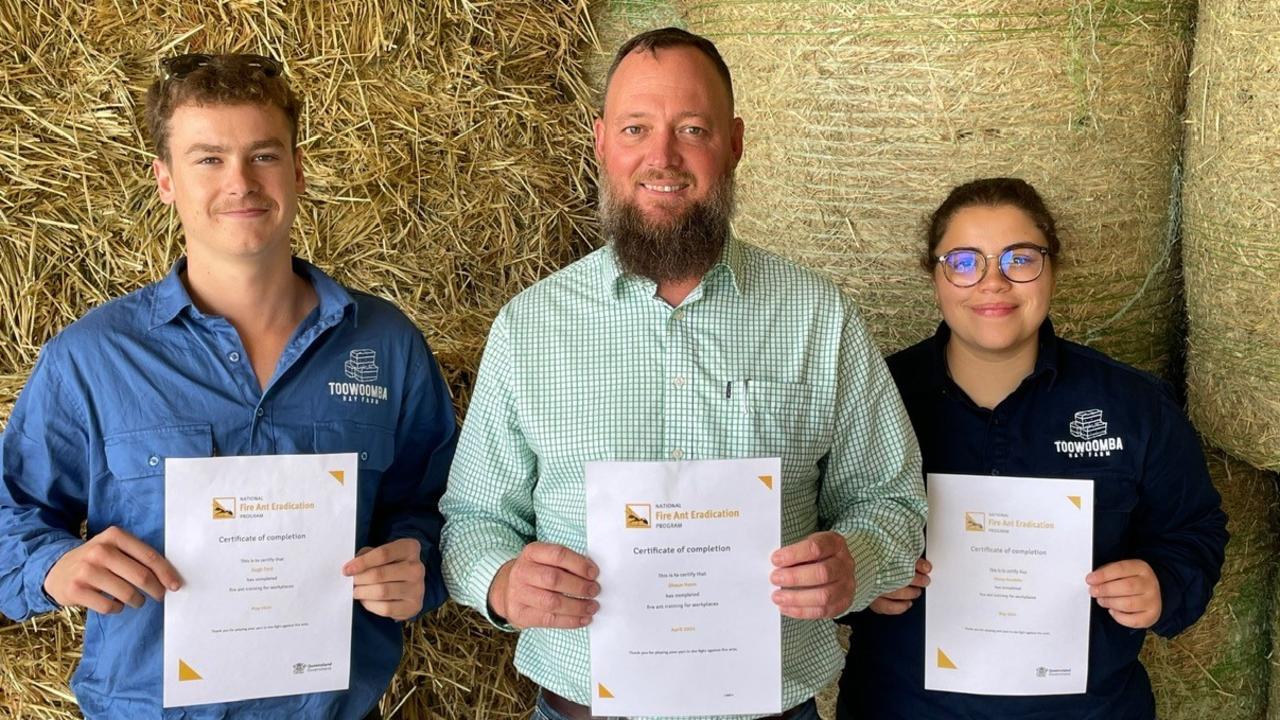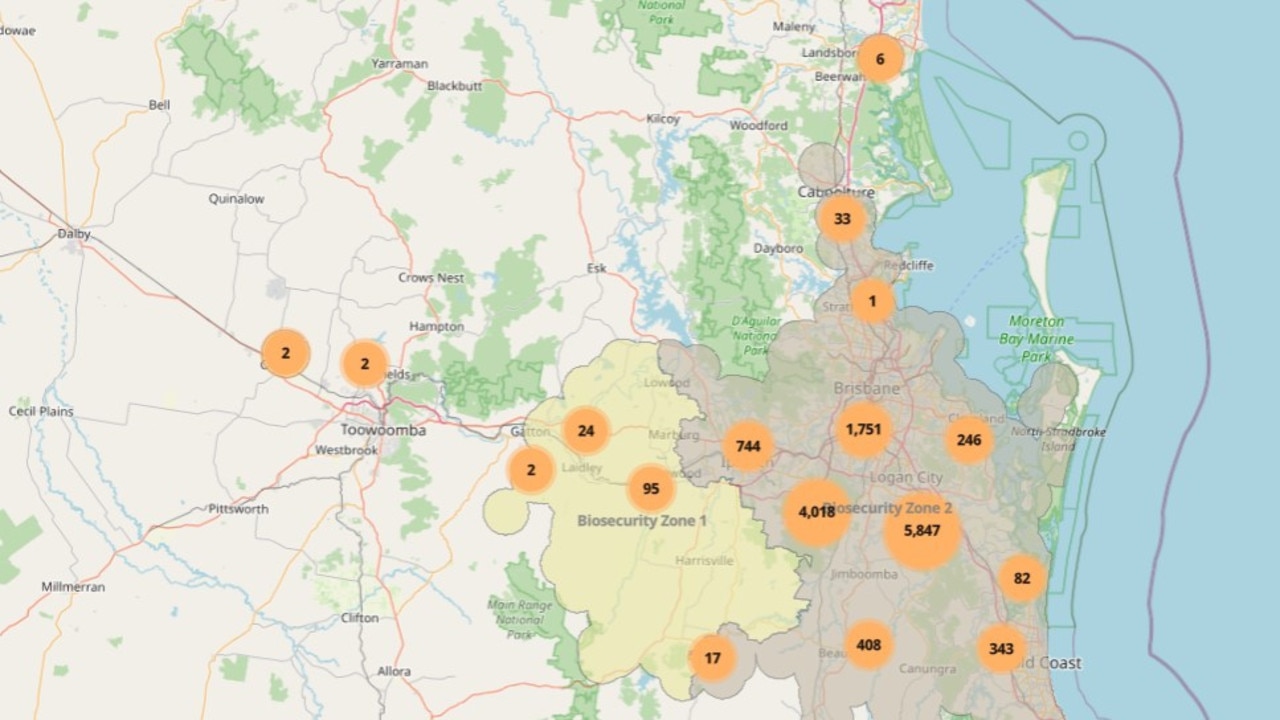Toowoomba Hay Business leads charge against fire ants in the Darling Downs
A Darling Downs business has responded swiftly after finding itself in the fire ant biosecurity zone. It comes as fears the spread of fire ants could be further afield than expected.

Business
Don't miss out on the headlines from Business. Followed categories will be added to My News.
A Darling Downs business has tackled the fire ant threat head-on after discovering half a million dollars of stock was stored within 5km of where the nests were found.
The battle to contain and eradicate the invasive, crop-destroying, and cable-chewing fire ant has only continued to rage this year as experts fear the ants may be spreading further west of the Darling Downs undetected.
Within this year alone, four infestations have been discovered outside the 800,000ha containment zone in Queensland, where residents, properties owners and sports teams are already feeling the impact of the tiny copper flame-coloured ants.
In April 2024, a startling find of more than 80 nests believed to have been in existence for two years at the Oakey Aviation Base put the Darling Downs into red alert, and within weeks a 5km emergency biosecurity zone was established around the nests.
When Toowoomba Hay Farm manager Shaun Hann found out a storage shed with more than $500,000 worth of hay was in that biosecurity zone he knew he “needed to find a way forward”.

With a number of hay farms up and down the Warrego Highway and the material being constantly transported, Mr Hann said implementing extra procedures was not cost-prohibitive and far outweighed any risks or costs should fire ants be found in their hay.
Luckily, they already have a sealed concrete storage shed, and lay plastic covering at the bottom of the hay to protect from moisture, which is an added layer of protection from fire ants too, he said.
The company then employed a local pest contractor to spray a chemical barrier around the shed to comply with the fire ant program’s biosecurity guidelines, he said.
While the government required monthly inspections, Mr Hann said they went with weekly inspections and integrated it, with “no real added cost” apart from staff time and certification for the systems.
It comes as the state government allocated almost $300m to Biosecurity Queensland in June 2024, with the National Fire Ant Eradication program receiving a number of staff increases, but the state also passing on fire ant management costs to nine local governments within the suppression zone.

While the fire ant program indicates an aim to eradicate fire ants by 2032, whether that is feasible or not is another question.
“I’m not even going to speculate, I think that we really have no alternative but to eradicate,” AgEtal managing director Ken Cunliffe said.
“We need to be looking out for fire ants or anything that has been suspected of having fire ants.
“Going out to Dalby if you’ve received products that could be carrier material for fire ants, even further away than that it would be worth checking around to see if you might have them.”
The aggressive ants are expected to cost the economy of Australia more than $2bn should they get out of hand.
While no money has been allocated to Toowoomba’s 2024-2025 budget for fire ants, councillor Tim McMahon said the council remains “dedicated to supporting” the efforts of the fire ant eradication program.
Somerset Council has called upon the state government to provide $300,000 to them for the next four years for fire ant management while Invasive Species Council Reece Pinata estimates costs to be in the millions for those hardest hit, such as the Gold Coast City Council.
Residents are advised to remain vigilant and report any fire ant sightings to the National Fire Ant Eradication Program at 13 25 23.








